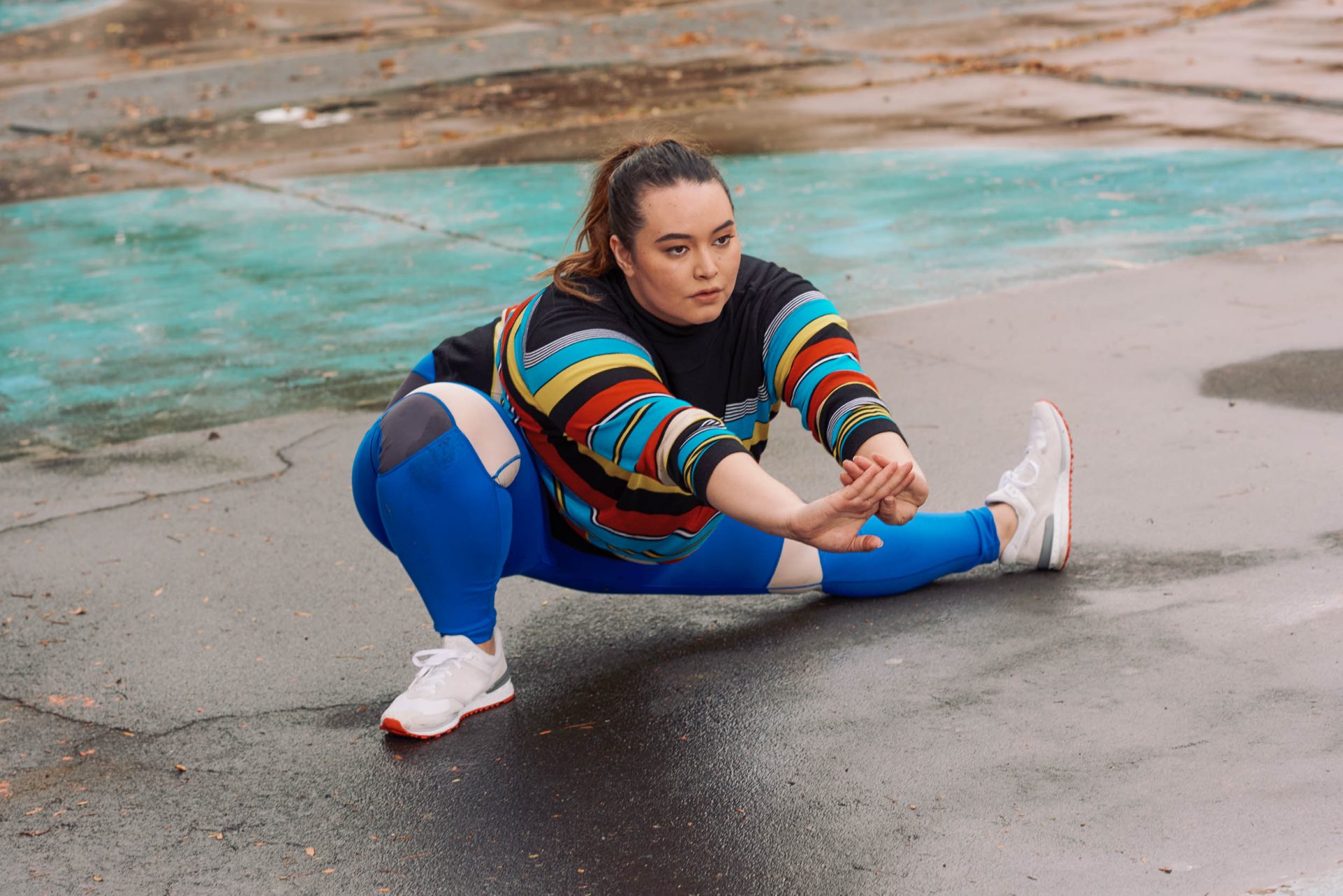Known as the body’s cling film, fascia is found everywhere. But what is it, and how do you look after it?
People talk so much about the impact of movement on our muscles, bones and organs, but have you ever heard about how we move, sit and train effects your fascia? The average exerciser probably hasn’t heard of this part of their body, and that is the very problem.
“I would say it’s probably one of the most overlooked structures in the human body,” says Niki Bird, fascial stretch expert, touch rugby athlete and personal trainer. “As a basic introduction, fascia is the connective tissue which is essentially responsible for holding us together. It runs from our toes all the way up to our head, under our skin, in between muscles, organs and bones. It’s everywhere in our body,” Niki explains.
You may also like
This is how yoga can benefit your mental health
In fact, fascia is so important that it could be the result of all of that stiffness and pain you’ve been blaming on aching muscles. And if you want to benefit your body, you need to know about how the fascia works.
What is fascia?
Fascia can be thought of as a cling film that covers the body, but it’s only recently that anyone has paid attention to it. “Scientists used to literally scrape all the fascia away because it was spread across the bodylike a spider’s web, getting in the way of the muscles and bones they were researching. But it’s come to light that it is so much more than a waste layer,” says Niki.
As well as connecting the body together, fascia “enables all body systems to operate in an integrated manner”, according to a 2018 paper. It’s also a protective layer, supporting the underlying muscles both in movement and from damage.
“When it is working properly, it slides and glides over other tissue to enable free movement,” explains Niki.

Does fascia get knotted or broken?
So what about when fascia isn’t working properly? As with every other kind of tissue, fascia is susceptible to damage. The best way to describe how that happens is through Niki’s T-Shirt analogy: “Imagine you grab onto the shoulder of a t-shirt and scrunch it up. When you do that, the rest of your shirt will move too. It will start to maybe tighten round the sides, hike up around the hips, rotate around the torso. Then once you let go, it all drops back into place again. If you do that quickly, you probably won’t see much of a crease.
“However, the longer you hold onto it, the bigger the crease will be and the longer it will take to bounce back into shape. Our fascia works in exactly the same way. It is one big connected sheet that always has the ability to bounce back into shape, but the longer we strain it, the longer it will take to return to optimal.”
That is good news and bad news: it means that sitting at a desk, neglecting to think about our posture or movement, can result in it getting sore and knotted. But it also means that you can get it back to normal. We’ll get to that, but first, how does that knotted fascia impact our body?
You may also like
What are muscle knots and how do you treat them? Fitness trainers answer the most googled questions
Well, unsurprisingly, it will impact all of your movement patterns. “If you spend day in, day out sat hunched over a desk and then you decide over the weekend you want to go and run 15K, something in your body is going to give. You’ve almost fixed yourself and your fascia into these positions over time so your body has to compensate in one way or another,” she says.
That could look like a tilted pelvis, an impacted stride length or collapsing knees. Essentially, it will be bad for our form and that can lead to injury. “Our bodies can often push through compensations for a period, therefore pain or injury may not manifest immediately. This explains why pain or injury can sometimes pop up for ‘no reason’ or from a very small trigger. The body eventually reaches a point where it can’t keep going and injury may occur with a simple activity, causing pain and discomfort,” writes physiotherapist Emma Martel for Pure Physio.

But it’s also about so much more than just our exercise. “Fascia and our nervous system are intimately connected. When people are stressed they often get tension headaches or neck aches. A lot of that can potentially be attributed back to the tightening of fascia and it’s response to the stress in the body,” Niki explains.
How do you heal fascia?
So let’s talk about looking after our fascia. “Fascia has a ‘use it or lose it’ quality, meaning that the more you move the better,” says Niki. “Fascia loves stimulus so the more we can feed it with good movement the better it will feel.”
This means a lot of regular, low impact movement will keep fascia elastic and smooth. Standing up every 15 minutes if possible, or as regularly as you can, is the first place to start. Then, we need to think about stretching. “When dealing with fascia, it’s usually better to take a gentle approach. Movement should be slow and dynamic. If you suddenly try and pull yourself into an extreme stretch, the chances are the body’s going to think ‘there’s pain here so I need to protect myself’ and tighten up even further” says Niki.
You may also like
How to use a foam roller for warm-ups and muscle recovery
How you breathe during the stretch is just as important as the stretch you do. “Using certain breathwork techniques can help to tap into our parasympathetic nervous system, helping to put us into a more relaxed state. Remember that fascia is connected to our nervous system, so the calmer and more relaxed you can be while you’re stretching the more effective it’s going to be with helping with the fascia,” advises Niki. be while you’re stretching the more effective it’s going to be with helping with the fascia,” advises Niki.
For sticky knots of tightness, foam rolling and massage can work in the same way they do on muscles. In fact, these things are known as myofascial release – ‘myo’ meaning muscle and ‘fascial’ of course talking about the fascia. Fascial stretch therapy and something called instrument-assisted soft tissue mobilisation, where a blunt blade is pushed over the skin to release knots, are also good therapy options. “However, I would rather somebody moved for five minutes, several times a day than did two hours once a week or relied solely on a monthly treatment. It’s about small regular daily habits,” says Niki
Most importantly, it’s about keeping the body moving in a way that we enjoy. “Our facial system is so linked to our emotional responses,” reminds Niki. “When we’re talking about caring for our body, it’s important to include lower impact stuff, but if you prefer stretching to yoga, do that. If you prefer pilates or a walk, do that. Your fascia will love you for it.”
Follow @StrongWomenUK on Instagram for the latest workouts, nutritious recipes and motivation from your favourite fitness experts.
Images: Getty
Source: Read Full Article






